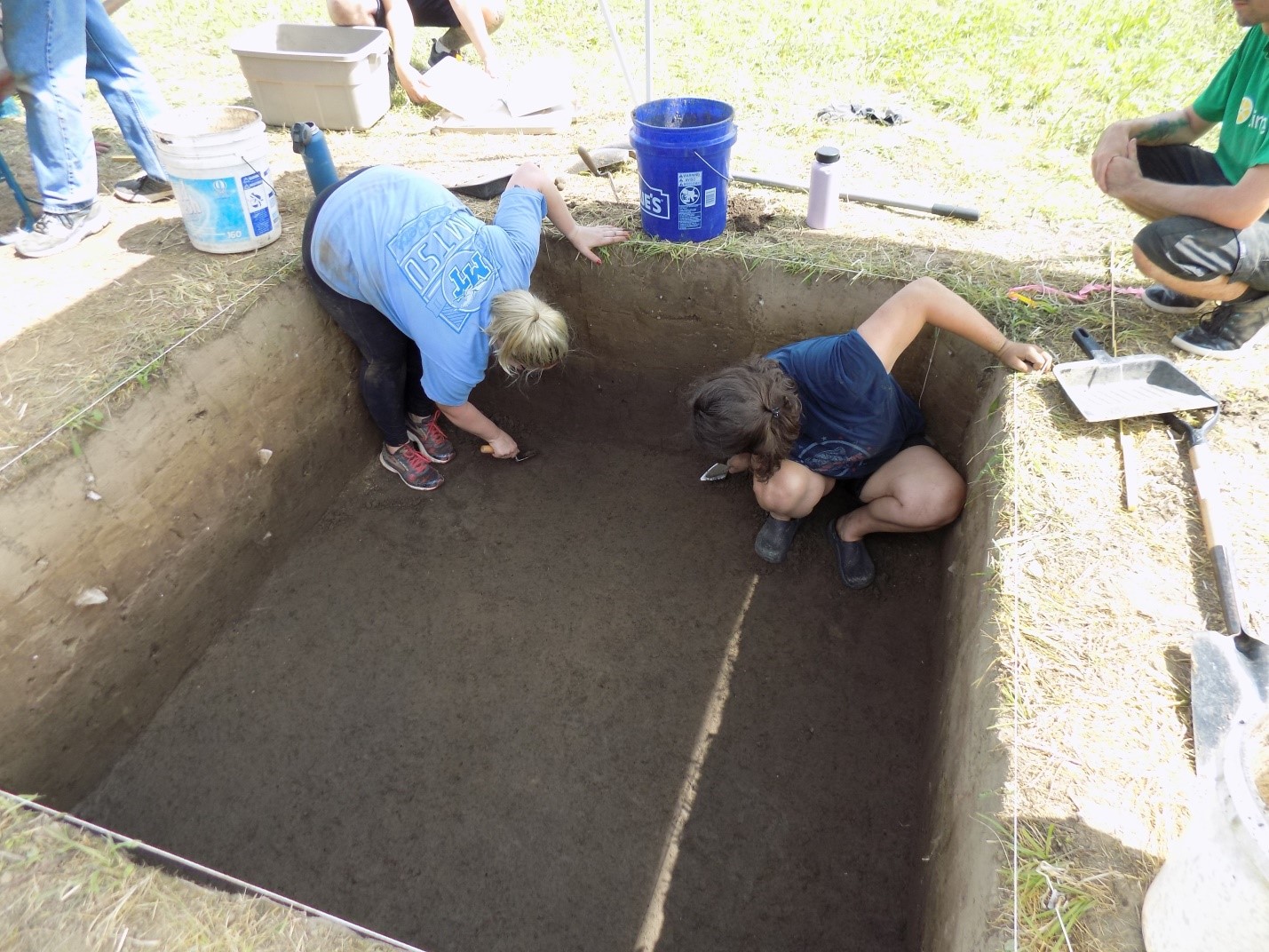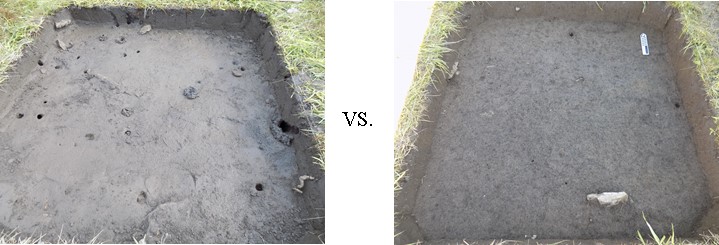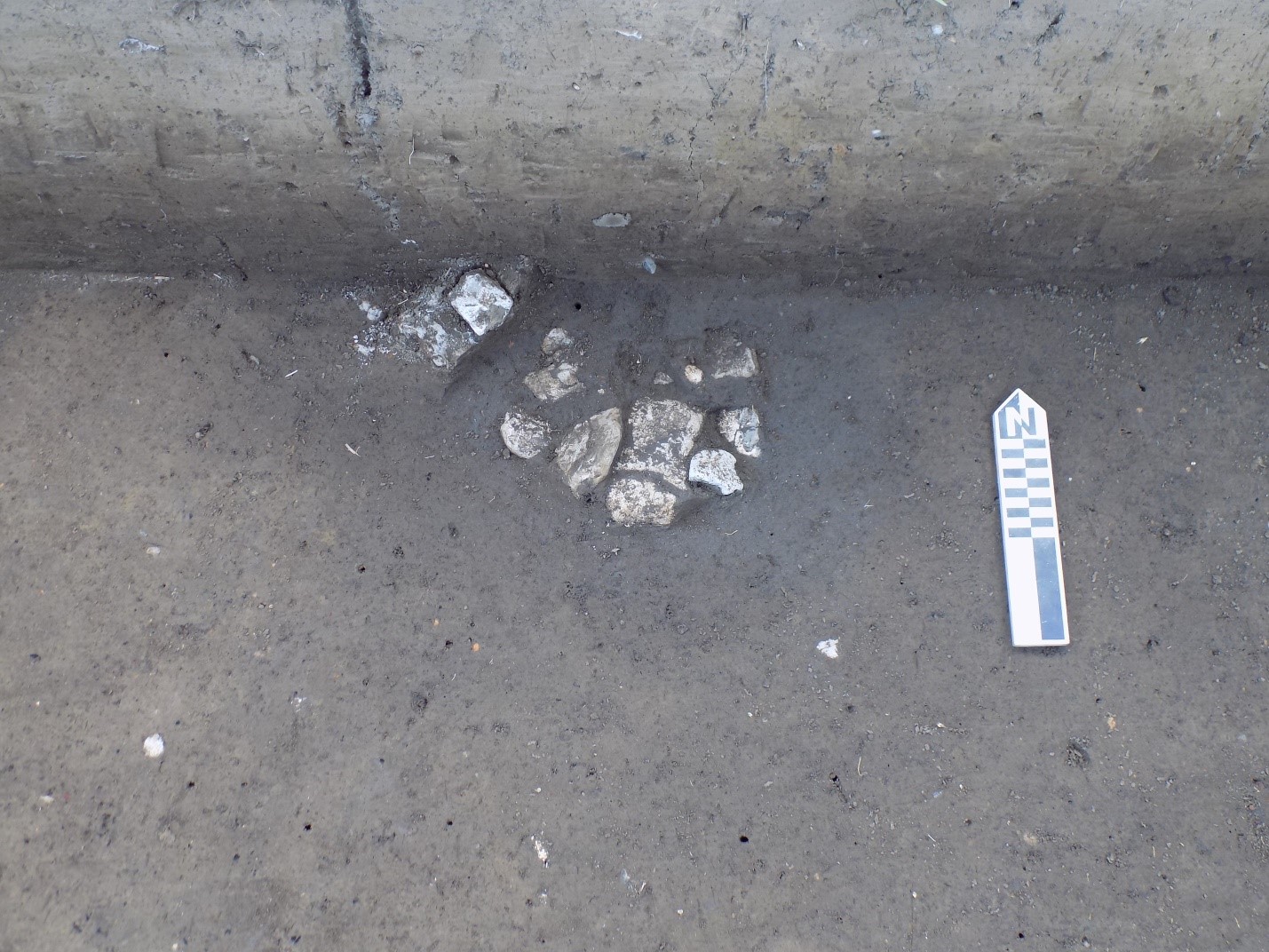We are approaching culturally-sterile subsoil in C18 and C19, so, there’s not too much to report from these units. Both are about 2.5 ft. deep, which means that clean troweling is becoming quite the challenge.

We were able to dig in units C15 and C16 for the first time in a week. Although we were able to clean up most of the crawfish burrows, the high water table prevented us from getting much else done in these units.

Meanwhile in Unit C17, Chris’s crew was hard at work excavating a cluster of burned limestone cobbles. Underneath this feature, they found a charred maize cob, suggesting that this could be the remains of a small hearth or cooking pit.

In the same level as their cluster of burned limestone, the crew is uncovering numerous pieces of deer bone and turtle shell, which supports our hypothesis that the linear rise in the center of the Wynnewood North Field was used for feasting ceremonies during the late prehistoric period.
The crew is looking forward to tomorrow, as this is our first official “Volunteer Saturday” where members of the public are invited to visit the site and help the students dig. In preparation for this event, Dr. Eubanks cleared the bridge of poison ivy and overhanging branches.
However, he appears to have disturbed the habitat of a groundhog. Groundhogs are not forgiving creatures, and so, Dr. Eubanks must be vigilant and prepared for retaliation.